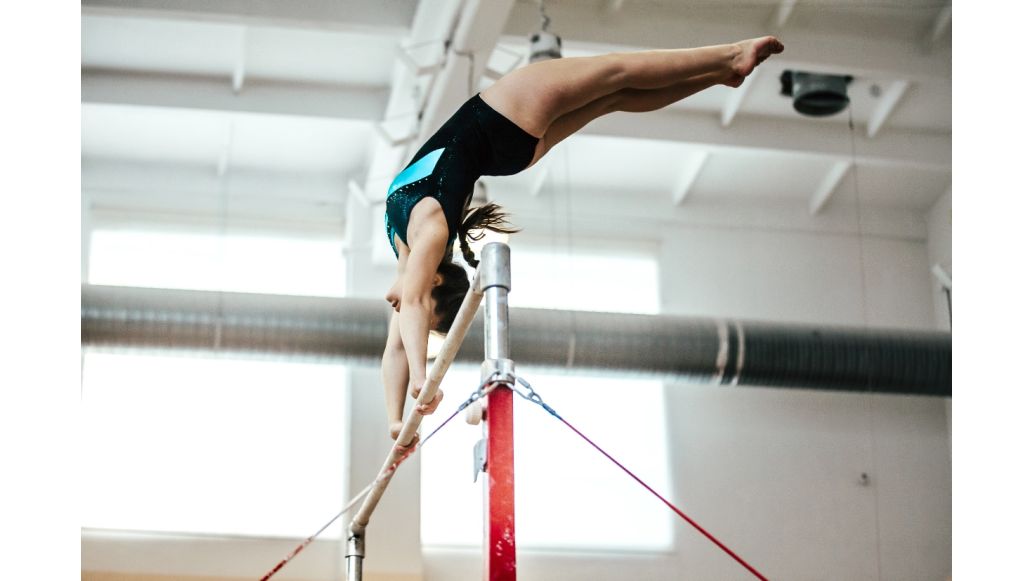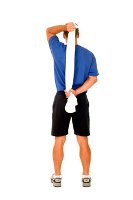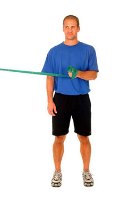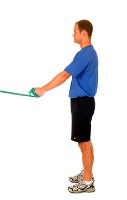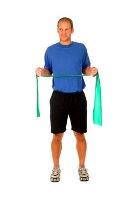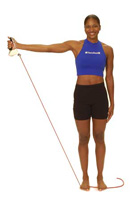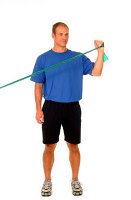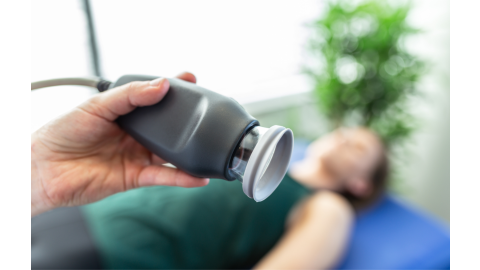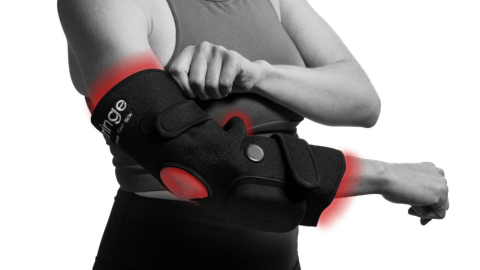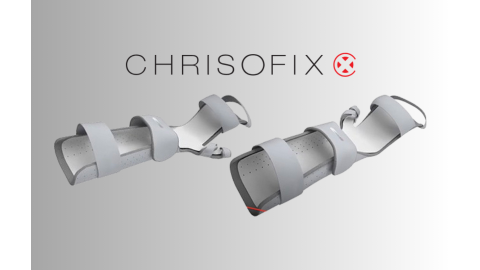The shoulder is used as a weight-bearing joint in gymnastics. This can lead to a variety of wrist, elbow, and shoulder injuries, including shoulder impingement. Relieve your shoulder pain, see a doctor, and ask about performing these rehab exercises at home.
What is shoulder impingement?
A shoulder impingement occurs when the tendons of the rotator cuff (RTC) become trapped and compressed under the bones (humerus and acromion) during shoulder movements. The shoulder is unusual because unlike most areas of the body, the bone covers the muscle. The rotator cuff muscle is sandwiched between the humerus (arm bone) and the acromion (top of the shoulder) in an area called the subacromial space. The rotator cuff (RTC) can become pinched between these bones leading to injury and inflammation (tendonitis and bursitis). Ultimately, this means shoulder pain for you.
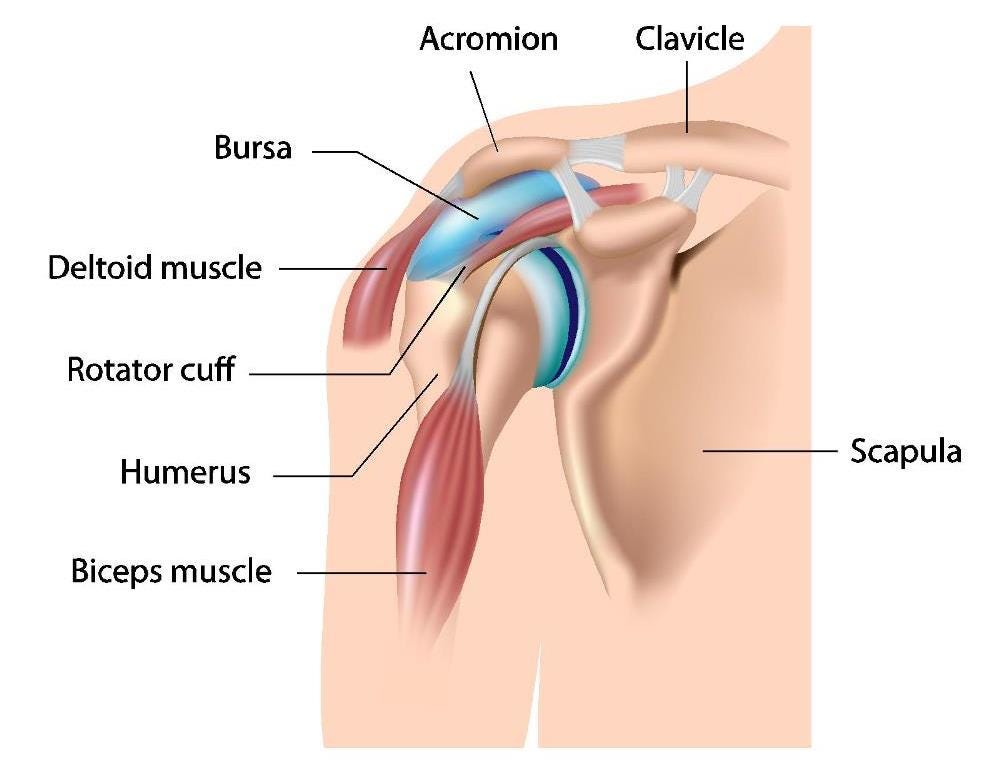
Why are gymnasts at risk?
Both male and female gymnasts regularly use their arms to support their body during most events including floor, balance beam, rings, uneven/parallel bars, and pommel horse. This weight bearing puts stress on the shoulder joint. Gymnasts need shoulders that are both stable and flexible. This is achieved by the rotator cuff muscles, but repetitive damage can cause shoulder impingement.
Symptoms
- A painful arc, pain when the shoulder is used between 70 and 120 degrees but painless outside that range
- Muscle weakness and pain when reaching behind the back or overhead
- Pain at night (often made worse by sleeping on your shoulder or with your arm overhead)
- Shoulder pain during daily activities (eventually pain occurs even at rest)
- Loss of strength in the shoulder
- Pain may radiate down your arm
Causes
Shoulder impingement symptoms can occur quickly due to trauma, like a fall, but gradual development is much more common. In gymnasts, this can be caused by the repetitive overhead motions, muscle weakness, or previous injury. An unstable shoulder makes your RTC work harder, until it becomes tired. Once the RTC is fatigued, it becomes inflamed and weakened due to pain. This means it can’t stop the humerus from coming up into the subacromial space and the compression causes more RTC shoulder pain.
Treatment
Typically, physical therapy (PT) is the first form of treatment for a shoulder impingement. An MRI is not usually done until six weeks of PT have been completed or if your doctor suspects a more serious problem (like a complete rotator cuff rupture). Shoulder arthroscopy surgery is the last option if PT fails or a complete rupture is shown on the MRI. Before it reaches that point, there are options for pain relief and rehabilitation.
Pain Relief
If you suspect you have a shoulder impingement, your first step should be to see a doctor. There are some steps you can take afterwards to manage your pain. First, you should stop all overhead activities until the pain subsides, this would include gymnastics moves that rely on overhead movements and activities at home, like reaching up into tall cabinets. You might be told to “live within a window.” This means you should try to keep your hands in front of your body in an area between your chest and waist that’s 2-3 feet wide.
For fast pain relief, you can try a topical analgesic like Biofreeze Classic that minimizes your shoulder pain so you can get back to daily activities. You could also use a shoulder cold pack to reduce inflammation or heat therapy if that feels best. Talk to your doctor about whether heat or cold therapy is a better option for you.
Rehabilitation Exercises
Here are some exercises you can perform at home in addition to your weekly physical therapist sessions. They are divided into a first and second phase. You should perform these exercises over the course of six weeks.
Phase One Exercises
The first phase focuses on rest, reducing inflammation (cold packs), aerobic conditioning (elliptical, bicycle, other activities that don’t use the shoulder), and strengthening the scapular (shoulder) muscles.
Begin using a yellow TheraBand resistance band and then progress to red, then green after you can perform 3 sets of 10 repetitions without pain or fatigue.
|
|
|
Phase Two Exercises
Phase two is more aggressive than phase one, you should move to this phase after you can complete 3 sets of 10 repetitions for the phase one exercises using the green band.
The second phase improves the range of motion and strength of your shoulder. Once again, start with the yellow TheraBand Resistance Band and progress over time for 3 sets of 10 repetitions each, increasing resistance when you can perform the sets without pain.
|
|
|
A shoulder impingement can be a painful injury that takes away your time in the gym. Keep your shoulder stretched and strong to help prevent reoccurance so you can focus on your gymnastics and not your shoulder pain.
References
Caraffa, A., Cerulli, G., Rizzo, A., Buompadre, V., Appoggetti, S., & Fortuna, M. (1996). An arthroscopic and electromyographic study of painful shoulders in elite gymnasts. Arthroscopy, 4, 39–42. Retrieved from https://bit.ly/2I4E1nB
Koester, M. C., George, M. S., & Kuhn, J. E. (2005). Shoulder impingement syndrome. The American Journal of Medicine, 118, 452–455. https://bit.ly/2YQWkn5
Williams, G. R., & Kelley, M. (2000). Management of Rotator Cuff and Impingement Injuries in the Athlete. Journal of Athletic Training, 35(3), 300–315. Retrieved from https://bit.ly/2JI2a6H
Medical Disclaimer: The information provided on this site, including text, graphics, images and other material, are for informational purposes only and are not intended to substitute for professional medical advice, diagnosis or treatment. Always seek the advice of your physician or other healthcare professional with any questions or concerns you may have regarding your condition.

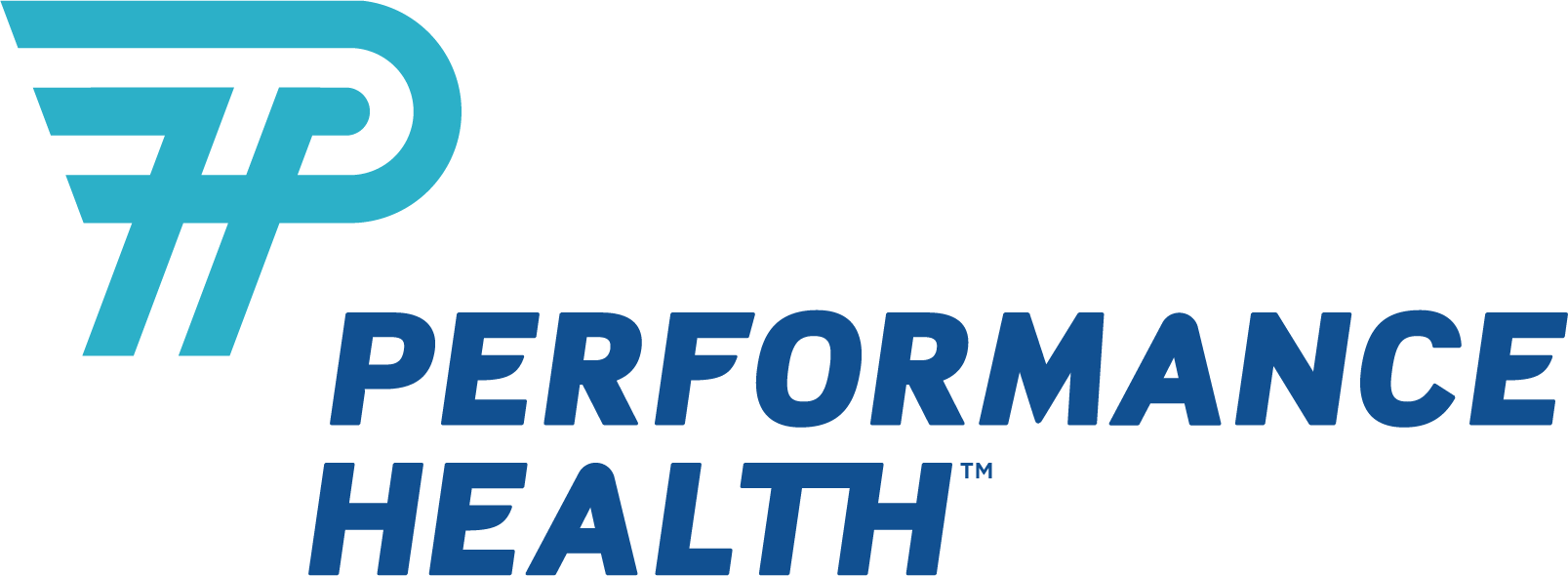






 France
France Australia
Australia